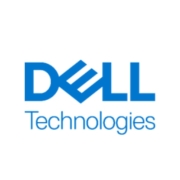Deduplication Software is designed to eliminate duplicate data, significantly optimizing storage use. This software reduces data redundancy, contributing to efficient data management and cost savings. Organizations leverage these solutions for improved storage utilization and streamlined data processes.
Deduplication Software identifies and removes duplicate instances of data, retaining a single, unique copy. This process enhances storage efficiency by minimizing the amount of storage space required, thus saving costs related to data maintenance. Users note significant cost reductions and improved system performance as primary advantages. Additionally, these solutions play a crucial role in data backup and recovery strategies, streamlining these processes by reducing backup windows and storage requirements.
What features should you look for?In healthcare, deduplication software is crucial in image archiving, ensuring unnecessary replicas do not clog storage. Financial institutions utilize these solutions to comply with data management regulations effectively. Educational institutions rely on deduplication to manage student data efficiently, reflecting its diverse industry applications.
Eliminating data duplicates is essential for organizations aiming to optimize their storage resources. It reduces costs associated with data maintenance and allows for more efficient data management. This software is indispensable for modern businesses looking to enhance their data handling capabilities.
| Product | Market Share (%) |
|---|---|
| Dell PowerProtect DD (Data Domain) | 27.2% |
| HPE StoreOnce | 18.5% |
| Dell PowerProtect Data Manager | 14.1% |
| Other | 40.199999999999996% |























Deduplication software is software that analyzes data to pick up duplicated byte patterns. This type of software verifies that the single-byte pattern is correct, and then uses the stored byte pattern as a reference. You will likely discover that deduplication software companies use fuzzy and phonetic matching technology to tackle dissimilarities between data sources to identify data that has been duplicated.
Deduplication is critical for businesses because it provides a way to effectively and efficiently manage backup activity, ensures cost savings, and creates load balancing benefits. Because the same byte pattern can occur up to hundreds or thousands of times, reducing the amount of data that is transmitted across networks can significantly improve backup speeds in addition to saving money on inflated storage costs. In addition, data duplication effectively decreases how much bandwidth is wasted when transferring data to or from remote storage locations.
Deduplication Software is essential for optimizing data storage by eliminating redundant data. This means you only store unique data, which can significantly reduce storage costs and improve system performance. You can enjoy efficient data management with faster data retrieval and more available storage space for critical business operations.
Can Deduplication Software improve backup processes?Yes, Deduplication Software can substantially enhance backup processes. By reducing the amount of data that needs to be backed up, it speeds up backup times and requires less storage space. This efficiency also extends to faster recovery times, allowing you to minimize downtime and ensure business continuity.
What are the integration capabilities of Deduplication Software?Deduplication Software often comes with flexible integration options, enabling you to incorporate it seamlessly into your existing IT infrastructure. Many solutions support various platforms and storage systems, ensuring compatibility and easy deployment without significant changes to your current setup.
Does Deduplication Software support cloud environments?Many Deduplication Software solutions offer robust support for cloud environments. This support allows you to manage and optimize data in both on-premises and cloud-based storage, providing scalability and flexibility for evolving business needs. It ensures that you can efficiently manage data across multiple locations without compromising on speed or data security.
What should you consider when choosing Deduplication Software?When selecting Deduplication Software, factors such as scalability, compatibility, ease of use, and cost-effectiveness should be considered. Assessing the software's ability to integrate with existing systems and its support for future data growth are critical. You should also consider the vendor's reputation and customer support to ensure ongoing reliability and assistance when needed.